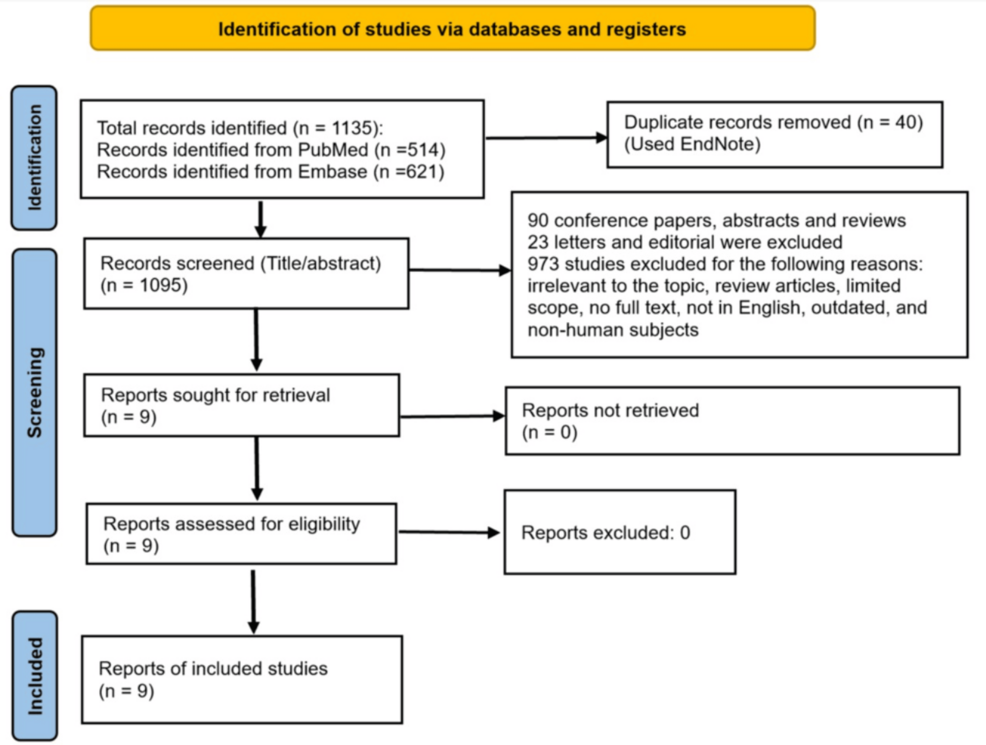Blog
-

Orlando Bloom shares rare glimpe with daughter Daisy
Orlando Bloom posts unseen snap with daughter Daisy Orlando Bloom was spotted spending some quality time with his daughter Daisy after split from Katy Perry.
The Lord of the Rings star took to his Instagram account…
Continue Reading
-

La Française de l’Énergie (ENXTPA:FDE) Profitability Declines, Challenging Growth-Focused Bull Case
La Française de l’Énergie (ENXTPA:FDE) saw profitability decline in the most recent period, with net profit margins dropping to 19.9% from 22.3% last year and reporting negative earnings growth over the past year. Despite this setback, investors are looking ahead to forecasts that call for robust earnings growth of 35.91% per year, which is well above the wider French market’s expectations.
See our full analysis for La Française de l’Energie.
The next section puts these results side by side with the widely followed community narrative, making it clear where the numbers back up the story and where they might challenge it.
Curious how numbers become stories that shape markets? Explore Community Narratives
ENXTPA:FDE Earnings & Revenue History as at Oct 2025 -
Profits increased at an impressive 39.4% per year over the last five years. However, the most recent annual period saw a reversal, with earnings turning negative and net profit margins dropping from 22.3% to 19.9%.
-
The company’s robust historical growth record, a cornerstone for bullish optimism, faces its toughest test amid this sudden decline.
-
Bulls often point to the long streak of rising profits as evidence of FDE’s durable growth engine.
-
What stands out now is that short-term setbacks are challenging the notion that past performance can be extrapolated, especially as margins slip even while forecasts remain upbeat.
-
-
La Française de l’Énergie trades at 35.5 times earnings, a hefty premium over both the European oil and gas industry average of 14.5x and peer average of 9.9x. Yet the current share price (€35.15) sits notably below the consensus analyst target of €45.67.
-
While some view the high P/E as a warning sign, prevailing market analysis presents a nuanced picture of valuation and growth potential.
-
On the one hand, a premium multiple often signals investor confidence in future growth, even as the current price lags analyst forecasts and is well under the €872.48 DCF fair value estimate.
-
On the other hand, market participants may see the gap between price and targets as a potential opportunity, provided FDE can execute on its growth projections and address its financial position.
-
-
Looking ahead, earnings are projected to grow at a rapid 35.91% per year, easily outpacing the French market. However, the single major risk is that FDE is not considered to be in a strong financial position.
-
Investors weighing the upside should keep the company’s financial health top of mind, as the prevailing analysis highlights both the attractive growth profile and this central vulnerability.
-
Substantial profit expansion forecasts and undervaluation relative to some metrics fuel optimism. Yet any further deterioration in financial strength could limit the market’s ability to reward growth.
-
The tension here is clear: while rapid future gains are on the table, the risk of a weak balance sheet is hard to ignore when sizing up the rewards.
-
Continue Reading
-
-

MIT method can probe inside atom’s nucleus, uses electrons as messengers
Scientists have developed a new method that can help them probe inside atom’s nucleus. Developed by researchers at MIT, the method uses the atom’s own electrons as “messengers” within a molecule to help probe inside the nucleus.
“Our…
Continue Reading
-

Evaluating Valuation Following Recent Share Price Rebound
Symrise (XTRA:SY1) shares have seen some movement recently, prompting fresh discussion among investors about its shifting valuation. With the past month showing a 10% gain, many are revisiting the stock’s potential as market conditions evolve.
See our latest analysis for Symrise.
Symrise has bounced back with a 1-month share price return of nearly 10%, reversing some of the losses seen earlier this year. Even so, the 1-year total shareholder return is still down over 27%. This suggests that while recent momentum is encouraging, many investors remain cautiously optimistic given the long-term underperformance.
If you want to broaden your search beyond Symrise, this could be the perfect time to discover fast growing stocks with high insider ownership
With analyst targets still well above the current share price, and growth estimates in the mix, the key question now is whether Symrise remains undervalued or if the recent recovery means the market already anticipates future gains.
With Symrise’s narrative fair value set at €103.53, shares closed at €81.82, highlighting a clear divergence between current sentiment and future expectations according to the prevailing view.
Symrise is executing a multi-year transformation focused on operational efficiency, portfolio optimization, and disciplined cost management, which is already yielding substantial margin improvements (notably, a gross margin increase of 250 bps and an EBITDA margin uplift). This is laying the groundwork for structurally higher net margins and improved earnings compounding.
Read the complete narrative.
Curious what’s fueling this bullish target? The secret mix includes aggressive margin upgrades, bold strategic initiatives, and forecasts that could reset investor expectations. See which financial levers might be game-changers, and what numbers experts are betting on to propel Symrise far above its current price.
Result: Fair Value of €103.53 (UNDERVALUED)
Have a read of the narrative in full and understand what’s behind the forecasts.
However, slower growth in key end markets or underwhelming margin improvements could challenge the upbeat outlook and limit Symrise’s share price recovery.
Find out about the key risks to this Symrise narrative.
While Symrise looks undervalued on a fair value basis, its price-to-earnings ratio of 22.6x is higher than both European Chemicals peers (17.2x) and the peer average (20.4x). This is also above the fair ratio of 19.6x. This suggests a risk that the market may eventually pull the share price closer to these lower multiples. Does this signal an opportunity or a warning?
Continue Reading
-

Phillips Edison (PECO) Margin Expansion Reinforces Bullish Narrative, But Steep 53x PE Ratio Raises Doubts
Phillips Edison (PECO) reported net profit margins of 11.5%, up from last year’s 9%, highlighting a notable improvement in profitability. Earnings grew 41.1% year over year, outpacing the company’s five-year average growth of 36.9% per year. However, future earnings and revenue are forecast to rise at slower rates of 3.95% and 5% per year respectively. As share price remains high relative to industry peers, investors now face the trade-off between strong historical growth and a steep valuation multiple.
See our full analysis for Phillips Edison.
Next, we will see how these headline results stand up when compared to the key narratives shaping sentiment around Phillips Edison. Some expectations may hold up, while others could be challenged.
See what the community is saying about Phillips Edison
NasdaqGS:PECO Earnings & Revenue History as at Oct 2025 -
Renewal leases at Phillips Edison are generating spreads of over 20%, while new leases are delivering more than 30% spreads. Both factors support recurring income and gradual net margin expansion.
-
According to the analysts’ consensus view, these strong leasing spreads back up the idea that demographic tailwinds in suburban markets and high occupancy rates, currently at a record 97.4%, are helping to reinforce stable, long-term revenue and NOI growth.
-
Portfolio trade areas average a $92,000 median income, which is 15% above the US average and supports the narrative of rising foot traffic and tenant sales based on concrete demographic strength.
-
Omnichannel trends and necessity-based tenant demand, as highlighted in the consensus narrative, support higher rent escalations and retention rates. This benefits both current returns and the margin outlook over time.
-
What’s driving analysts’ conviction? Bulls and bears both see unusually sticky demand, but only time will tell if those 97.4% occupancy rates can stay this high.
📊 Read the full Phillips Edison Consensus Narrative.-
With 95% of its debt fixed-rate and a weighted average maturity of 5.7 years, Phillips Edison’s balance sheet is designed to handle rising rates. This lets management focus on strategic acquisitions rather than dilutive equity raises.
-
Analysts’ consensus narrative highlights how a disciplined approach to new property deals, often below replacement cost and at a 6%+ cap rate, positions Phillips Edison to steadily grow earnings and FFO, even in a competitive real estate environment.
-
Low leverage of 5.4x EBITDAre allows PECO to opportunistically pursue high-growth, grocery-anchored properties, supporting external growth without overextending the balance sheet.
-
This active “portfolio recycling” and acquisition strategy is seen by consensus as a core ingredient for long-term FFO and EPS expansion, especially while institutional investor demand for stable, necessity-based retail remains high.
-
Continue Reading
-
-

Exploring Valuation After Launch of Premium Avis First Service in Europe
Avis Budget Group (CAR) has introduced Avis First, a premium concierge-style car rental service now available at select European airports. The announcement highlights an effort to elevate customer experience and reposition the brand within the competitive premium travel segment.
See our latest analysis for Avis Budget Group.
Avis Budget Group’s rollout of Avis First comes at a dynamic time for the stock. After a volatile nine months, the share price has rebounded sharply with a year-to-date return of 95.2% and a one-year total shareholder return of 90.6%. Momentum is clearly building again, even as the company navigates broader market shifts and pushes for growth through premium services like this.
If premium offerings like Avis First have you curious about what else is trending in the travel and mobility sector, it could be the perfect opportunity to explore See the full list for free.
With shares trading above some analyst targets, the big question emerges: is Avis Budget Group’s recent rally justified by fundamentals, or are we simply seeing future growth already priced in? Is there still value to be found for buyers, or have markets already factored in all the upside?
With last close at $157.01 and the most widely followed narrative setting fair value at $148, sentiment is heated. The stock’s current price bakes in optimistic growth. Are bold business shifts justified, or is the narrative ahead of reality?
The launch and rapid scaling of Avis First, a premium rental offering, could be fueling expectations of significant revenue and margin expansion, as investors anticipate a sustained uplift in average revenue per day (RPD) and market share capture from price-insensitive travelers; this optimism may not fully account for competitive responses or changing customer preferences, increasing the risk that future revenue and net margin improvements fall short of current valuations.
Read the complete narrative.
What are the hidden drivers behind such a premium price tag? The projections fueling this narrative rely on future profitability metrics that are not typical for this sector. Want to find out if aggressive revenue growth, margin leaps, or declining share counts drive this narrative’s math? The dramatic inflection points behind the fair value are more surprising than you might expect. See for yourself how the pieces fit together.
Result: Fair Value of $148 (OVERVALUED)
Have a read of the narrative in full and understand what’s behind the forecasts.
However, if premium demand falters or competition intensifies, the company’s anticipated revenue growth and improving margins could quickly come under pressure.
Continue Reading
-

$17.7M One-Off Loss Pressures Margins, Challenging Growth Optimism
ChoiceOne Financial Services (COFS) has posted average annual earnings growth of 0.9% over the past five years, but the latest results reflect net profit margins dropping to 13% from 27.2% a year ago. The company also recorded a significant one-off loss of $17.7 million in the last 12 months, weighing on reported numbers. Despite the margin pressure and recent loss, analysts project robust earnings growth of 28.9% per year, which is well above the expected pace for the broader US market. However, revenue growth is forecast to trail overall industry trends.
See our full analysis for ChoiceOne Financial Services.
Next, we will see how the numbers compare to the most widely held narratives in the market and where investors might want to challenge their assumptions.
Curious how numbers become stories that shape markets? Explore Community Narratives
NasdaqCM:COFS Earnings & Revenue History as at Oct 2025 -
The $17.7 million one-off loss in the past year directly reduced net profit margins to 13%, a significant drop compared to the prior year’s 27.2%. This occurred even as revenue is projected to rise moderately at 6% per year.
-
Bulls would normally argue that strong earnings growth projections support resilience even after setbacks. However, projected 28.9% earnings growth now coexists with worsened profitability metrics linked to the recent large loss.
-
Robust forward earnings expectations surpass the overall US market. At the same time, the impact of such a major non-recurring loss invites questions about the underlying quality of these projected gains.
-
While optimism surrounds future growth, the margin reversal and sizable loss may test bullish confidence if similar surprises continue.
-
-
At a price-to-earnings ratio of 32.5x, COFS trades at a much higher level than both the peer average of 9.7x and the US Banks industry average of 11.2x. This indicates the stock is valued at a notable premium versus comparables.
-
Critics highlight that, while discounted cash flow valuation suggests a substantial 54% gap between the current $30.59 share price and the DCF fair value of $66.35, the sharp premium on the P/E ratio compared with industry standards creates tension for anyone concerned about overpaying for future growth.
-
The current P/E multiple implies very high expectations are already priced in, even with forecasted earnings expansion.
-
This valuation disconnect prompts cautious investors to question whether predicted growth justifies paying so far above both company peers and the sector as a whole.
-
Continue Reading
-
-

Lea Bank (OM:LEA) Margin Beat Reinforces Bullish Narratives on Turnaround and Growth Prospects
Lea Bank (OM:LEA) delivered a notable set of numbers this quarter, with net profit margins climbing to 32.1%, up from 28.9% last year, and EPS growth hitting 25.8% after several years of declines. Looking forward, analysts expect the bank’s earnings to grow by an impressive 24.8% per year over the next three years, easily outpacing the wider Swedish market forecast of 12.6%. With robust revenue and profit trends, improved margin quality, and a share price of SEK12.8 that currently sits below estimated fair value, the risk-reward outlook appears solid for investors tracking the turnaround story.
See our full analysis for Lea Bank.
The next section sets these latest results alongside the most widely followed narratives for Lea Bank, giving a clearer view of where the numbers confirm the story and where they raise new questions.
Curious how numbers become stories that shape markets? Explore Community Narratives
OM:LEA Earnings & Revenue History as at Oct 2025 -
Lea Bank’s net profit margin climbed to 32.1%, well above the industry average, after sitting at 28.9% a year ago. This places it firmly ahead of broader European banks.
-
Profitability heavily supports a constructive outlook because
-
the bank’s margin improvement coincides with a reversal from years of average 28.4% annual earnings decline and highlights management’s shift in strategy,
-
robust net profit margins often make future growth more durable, especially if revenue projections of 30.4% per year are realized.
-
-
Forward guidance expects earnings to rise by 24.8% annually and revenue by 30.4% per year. Both measures significantly outpace the wider Swedish market’s 12.6% and 3.9% growth rates respectively.
-
The projected growth path stands out for two reasons:
-
Current forecasts set Lea Bank apart from local and regional competitors, emphasizing its growth as not just a rebound but a real shift ahead of market trends,
-
such outperformance, if delivered, may establish Lea Bank as one of the region’s faster-growing lenders and support further re-rating by investors watching for sustained upside.
-
-
The share price of SEK12.8 still trades below its DCF fair value of SEK18.13. With a P/E of 11x, it is priced below peer averages of 12.5x but trades slightly above the European industry average P/E of 9.7x.
-
This pricing presents a mixed but compelling opportunity:
-
investors are getting a discount to both fair value and typical peer multiples, reducing downside risk for value-oriented buyers,
-
a modest premium to the wider European bank sector means some caution persists, especially for those prioritizing sector-wide bargains.
-
Continue Reading
-
-

Slower 6.8% Earnings Growth Challenges Bullish Valuation Narratives
EastGroup Properties (EGP) posted earnings growth of 6.8% in the last year, coming in below its 14.3% per year average over the past five years. Net profit margins slipped to 35.7% from 37% in the previous year, while the shares are trading at $177.2, well below an estimated fair value of $230.46 by discounted cash flow. With earnings growth projected at 10.3% annually and revenue expected to rise 9.7% per year, investors will note the company’s continued profitability and attractive dividend, but may also weigh its premium valuation against peers and recent moderation in profit growth.
See our full analysis for EastGroup Properties.
The next section puts these results head-to-head with the most widely followed narratives for EastGroup Properties, highlighting where the numbers confirm or challenge investor sentiment.
See what the community is saying about EastGroup Properties
NYSE:EGP Earnings & Revenue History as at Oct 2025 -
Net profit margin slipped to 35.7%, down from 37% last year, but analysts project an increase to 36.9% over the next three years as revenue and earnings scale up.
-
Analysts’ consensus view highlights that persistent demand for logistics space in Sunbelt markets, coupled with limited new supply, underpins continued pricing power and potential for further margin recovery.
-
Margin expansion is expected to benefit from structural migration to high-growth states. This supports net operating income stability even as certain regional assets face headwinds.
-
Consensus narrative notes that the company’s focus on infill, last-mile logistics keeps occupancy high and reinforces robust rental growth that earns back some margin lost in recent periods.
-
-
To see how both margin resilience and local headwinds shape analyst views, see where the consensus stands for EastGroup Properties. 📊 Read the full EastGroup Properties Consensus Narrative.
-
EastGroup trades at a price-to-earnings ratio of 38x, notably higher than the sector average of 16.7x and the peer average of 29.2x, despite recent moderation in earnings growth.
-
Analysts’ consensus view contends that while pricing could appear stretched, the company’s robust balance sheet and land bank provide the opportunity to pursue new developments if capital access improves.
-
Consensus expects future PE to rise further, reaching 45.3x on projected 2028 figures. This remains well above the US Industrial REITs industry and validates a premium only if multi-year growth is maintained.
-
Still, valuation upside rests on EastGroup sustaining high occupancy and rental spreads amid forecasts for share count dilution and evolving capital markets.
-
Continue Reading
-
